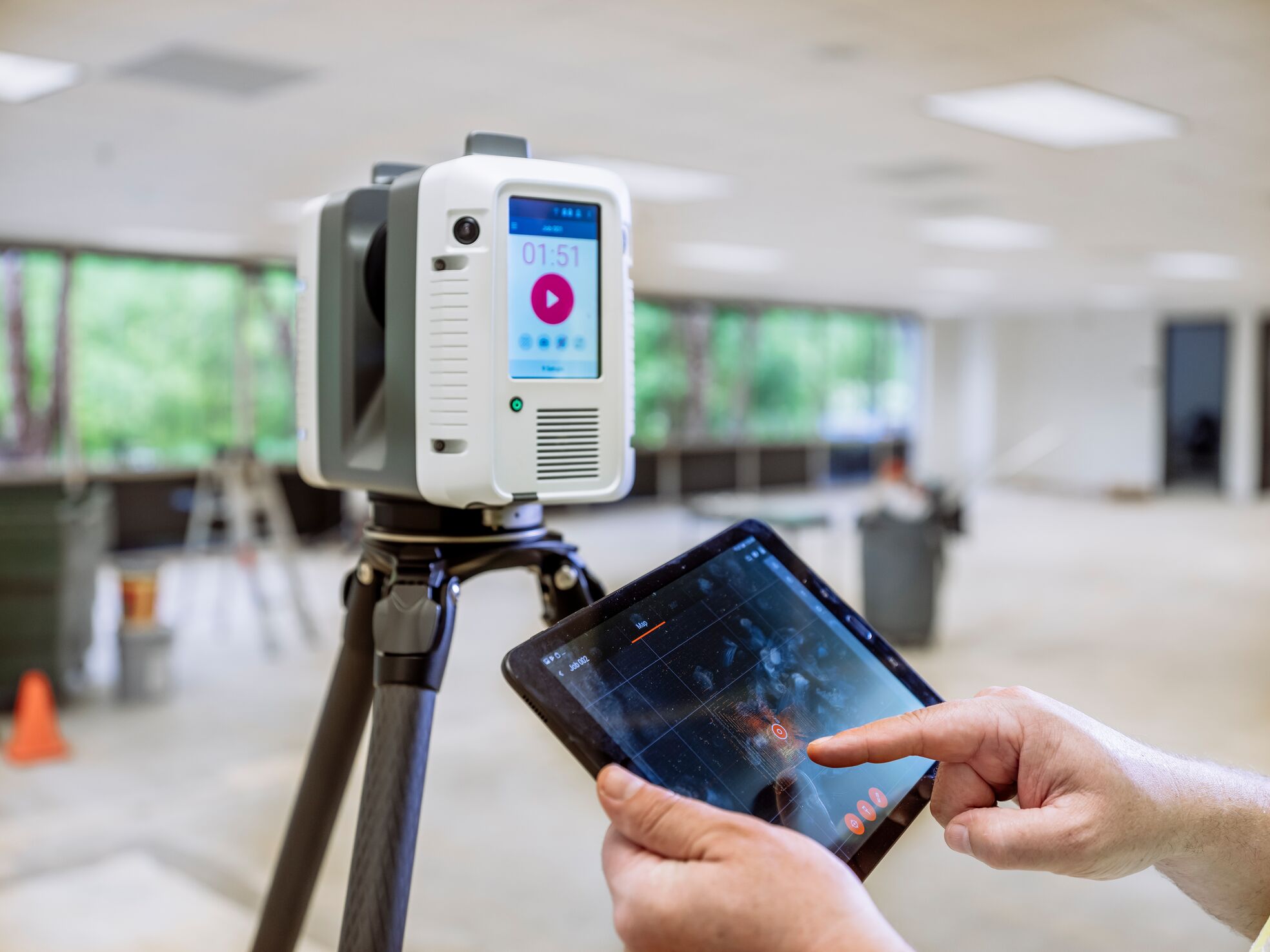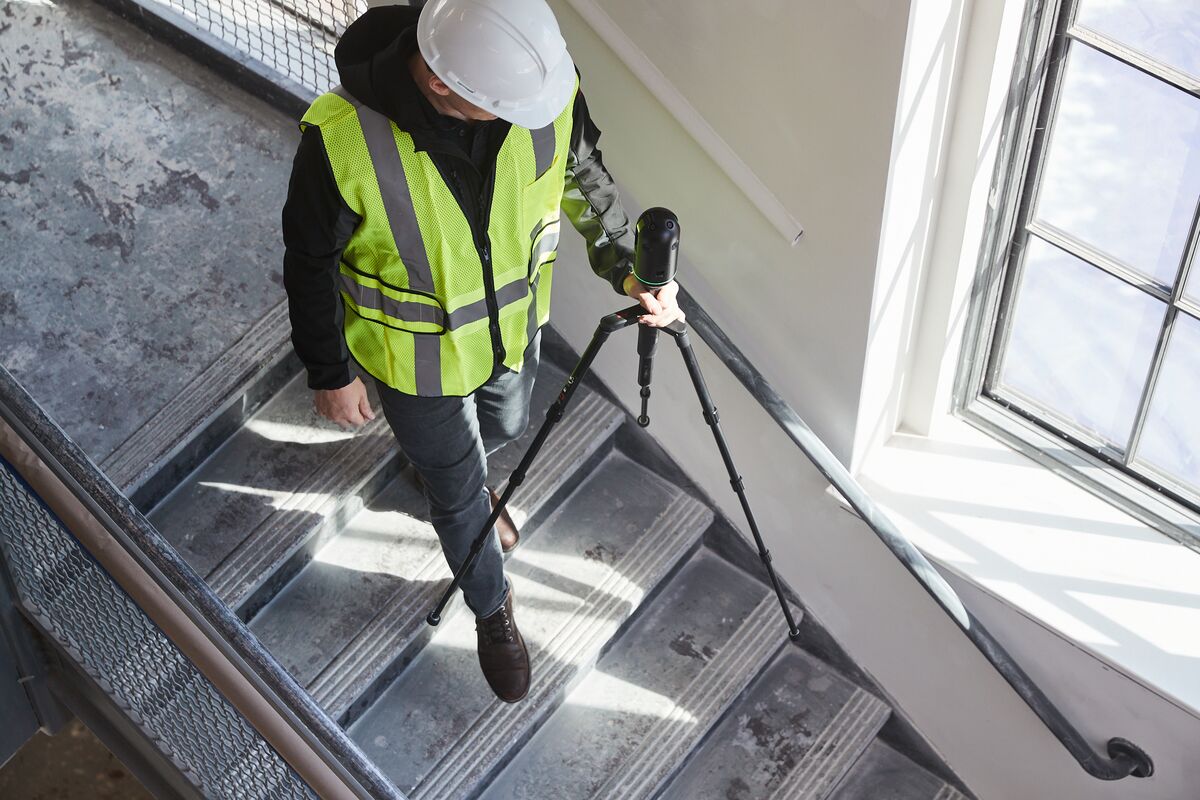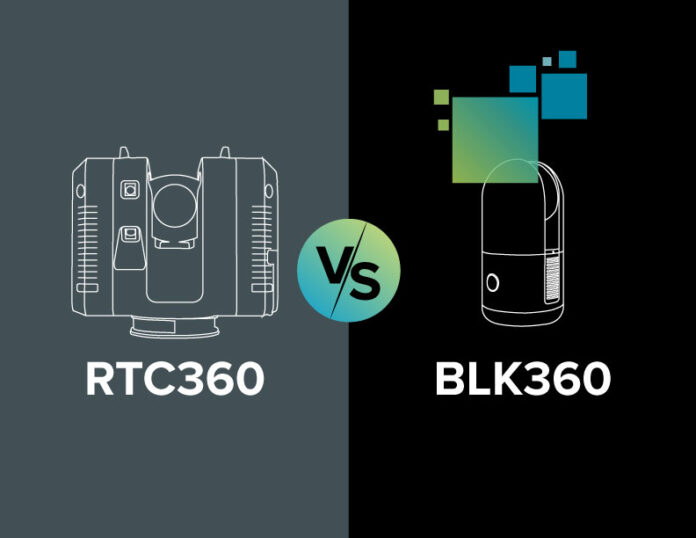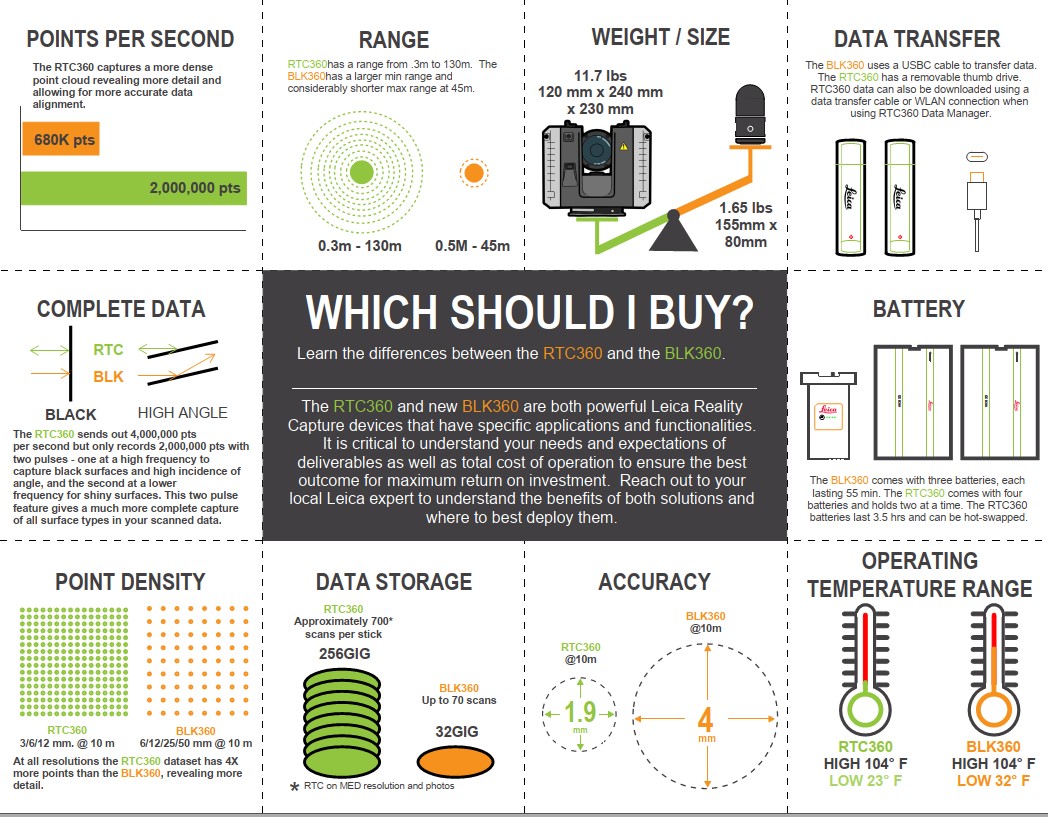As construction projects become bigger and more complex, it is crucial to have the right tools to ensure efficient and accurate work. Two laser scanners, the Leica RTC360 and the next-generation Leica BLK360, are popular choices among building construction professionals.
The most obvious differences between the two scanners are in price and size, with the new BLK360 an attractive option for cost-conscious contractors looking for laser scanning capabilities in a small form factor. But as Clair Vander Zwaag of Leica Geosystems and Mark King of Multivista explain, selecting the right scanner isn’t always so straightforward.
Here they review some of the key capabilities, advantages, and limitations of both technologies to help you make an informed decision.
Leica RTC360 and Next-Generation BLK360 at a Glance
The Leica RTC360 3D laser scanner is a highly accurate, reliable, and portable hardware and software solution. With a capture rate of up to 2 million points per second and an advanced HDR imaging system, the creation of colored 3D point clouds can be completed in under two minutes. The scanner automatically pre-registers point cloud data in the field to quickly conduct quality control checks, improve productivity, and make better-informed decisions on site.
The next-generation BLK360 imaging laser scanner is a high-speed option that is well suited for smaller projects and confined spaces. It is not as accurate as the RTC360, but it is still capable of producing high-quality, detailed scans. The BLK360 is also portable, easy to use, and offers fast data processing. Additionally, the imagery capture with the BLK360 is outstanding.
“When the RTC360 was introduced in 2018, it was a massive leap forward in terms of speed and production,” says Mark. “Now with the new BLK360, the speed is fantastic. It takes images and scans at the same time and takes faster individual scans than the RTC360. We still see the RTC360 as our primary scanner just because it keeps our options open to all the things our clients want to do. But the BLK360 has its place.”
Accuracy and Range
The RTC360 captures high-resolution data with millimeter accuracy, making it ideal for projects that require precise measurements such as mechanical, electrical, and plumbing (MEP) and floor flatness analysis. However, the BLK360 is not far behind and can capture data with sub-centimeter accuracy, making it a suitable option for architectural as-built data capture and many construction applications.

“One of first questions to ask in evaluating a laser scanner is, What level of accuracy is needed?” says Clair. “Are you operating in a 1/16 or 1/8-in. world, or in a 1/4-in. or 1/2-in. world? And then also what kind of range requirements are you going to need with most of your projects—are you going to be working within 20 to 30 ft of everything or more like 60 to 200 feet? These two questions can really help you drill down to the right technology.
“I see the RTC360 as the professional-grade scanner,” he adds. “If you’re doing projects which require higher accuracies, longer ranges, and more diverse analysis, the RTC360 absolutely fits those requirements. On the other end, the new BLK360 is a great entry-level scanner. It’s really built for smaller projects that you would capture at less range, a little less accuracy, but you can go through and quickly gather information. You can get your feet wet with reality capture and start to understand the workflows and deliverables, and potentially work up to a more professional-grade laser scanner.”
Speed
The BLK360 is faster than the RTC360 when it comes to capturing a single scan. However, this does not necessarily translate into faster project completion as the BLK360 may require multiple setups to capture all the necessary data. More setups can lead to additional time spent on data processing and a higher total cost of operation. In contrast, the RTC360 can cover larger areas quickly with fewer setups, resulting in faster project completion and reduced operational costs.

“Total cost of operation is an important consideration when exploring any technology,” Clair says. “Even though the BLK360 is a faster scanner, it might be a little more expensive to deploy in a larger space.
“Total cost of operation also ties into data storage, data transfer, battery life and being able to hot swap the batteries, so these are all questions to ask when you’re evaluating your options,” he adds.
Versatility
Both the RTC360 and new BLK360 are versatile and can be used for various construction projects. The BLK360 is ideal for projects like residential properties and tight mechanical rooms that require fewer scans. If you work in a wide range of areas and spaces, the RTC360 might be a better choice. It can easily handle large and complex projects due to its high accuracy and fast data capture speed. It can also capture accurate measurements of buildings, complex machinery, and other structures.
“We have around 40 laser scanners in our fleet, and the vast majority of them are RTC360s that have been acquired over the last three or four years at different locations,” says Mark. “It’s a workhorse for us. When a client comes to us with a requirement to capture point cloud data, the RTC360 is often the best fit in terms of being able to capture whatever they need to the correct accuracy and the correct point density.”
Operating Environment
Sometimes scanning for new construction requires working in challenging environmental conditions. The RTC360 laser scanner is designed to operate in a wide range of environments and can withstand inclement weather.
“I know operators that have taken that scanner out in the rain, in the snow, and in very hot and cold conditions,” Clair says. “The optics are enclosed on the RTC360, so dust and moisture aren’t an issue. It also has a filtering system which will clean the data set when you do have to run the scanner in rain or snow. It’s a tremendously rugged scanner that can handle a lot of different weather conditions. On the flip side, the BLK360 is definitely more conservative and has more constraints.”
The Verdict
Based on the analysis above, each scanner has its own strengths and limitations. In general, the Leica RTC360 is often considered the best option for large and complex projects that require high accuracy and fast data capture speed. The next-generation BLK360 can be a suitable choice for projects with less square footage.
But the best answer for your organization might be somewhere in between.
“In many cases, there’s an application for both laser scanners,” says Mark. “Supplementing the workhorse capabilities of the RTC360 with a next-generation BLK360 as a fill-in is a great way to optimize your scalability. Having the two technologies working together gives you the best of both worlds.”
To explore laser scanning solutions and discuss your needs with a building construction specialist, contact us.







